The S197, or fifth-generation Mustang, is the first all-new 'Stang for the 21st century.
Flat, vertical body shapes recall fond memories of the model's first generation.
Significant engine advancements, and 2010 design refresh, help keep Chevy and Dodge
competitors at bay. Let's look at S197 Mustang horsepower and torque information for model years 2005-2014. This
data is gathered from factory-provided numbers and other online sources. The engine
output data cited here are based on new, non-modified engines and exhaust systems.
Horsepower and torque figures can lower over time and change due to aftermarket
modifications. If you're looking for more information about the 2005-2014 Mustang, then look no further than our complete breakdown of the
S197 article!
2005-2010 4.6L
2011-2014 5.0L
2007-2010 GT500
2013-2014 GT500
2008-2009 Bullitt
2012-2013 Boss 302
Base Improvements
Spects Table
To the casual observer, it may seem that Ford just carried over the 4.6L 8-cylinder for the
introduction of the fifth-generation Mustang. While this is technically correct, the
reworked Modular V-8 benefits from significant, performance-oriented improvement.
Changes begin with a new aluminum engine block that saves 75 pounds. Ford then adapts
new cylinder heads from the 5.4L Triton engine. Thanks to a three valve-per-cylinder
configuration and variable camshaft timing, the V-8 has improved airflow and a higher
compression ratio. As a result of these engine upgrades, 2005-2009 GT-flavored Mustangs now produce 300 hp and
320 lb-ft of torque. For the updated 2010 Mustang, horsepower increases to 315 while
2010 Mustang torque performance stays the same. For 2011, Ford introduces a new V-8 engine to Mustang GTs. While its 5.0L displacement may
bring back thoughts of the old “5.0” Windsor motor, this “Coyote” 8-cylinder is based on
the Modular power plant architecture. Dual overhead cams and other technology gives the
Mustang a needed boost as the original pony car faces competition from LS3-equipped
Camaros and HEMI-powered Challengers and Chargers. For 2011-2012, the Coyote engine
gives GTs an impressive performance upgrade to 412 hp and 390 lb-ft of torque. While
torque numbers stay the same for 2013-2014, horsepower increases by eight for these
years. With the success of previous-generation special edition Mustangs in mind, Ford released the
potent Shelby GT500 in 2007. Based on a recently formed partnership with Carroll Shelby,
Ford's Special Vehicle Team (SVT) engineered a high-performance power plant for a
factory-built car. The GT500 moves into near supercar status by using a hand-built 5.4L
iron-block V8 with aluminum cylinder heads from the Ford GT, quad-valve configuration,
and a supercharger generating an 8.5 lb-per-square-inch boost. Other enhancements
include modified manifolds and dual custom-tuned mufflers. The 5.4L V-8 becomes the largest-displacement power plant installed in a Mustang since the
1970s, and, to that point, the GT500 is the most potent original Mustang ever built.
Through 2009, output numbers for the Shelby GT500 hit a mind-numbing 500 hp and 480
lb-ft of torque. 2010 Mustang horsepower and torque output reach 540 and 510,
respectively. For 2011-2012, the GT500 gets another performance boost to 550 hp and 510
lb-ft of torque. For the last two years (2013-2014) of the S197 Mustang, Ford goes to engine extremes for the
GT500. The original 5.4L motor is bored out to a 5.8L displacement. A better Eaton
supercharger is used as well. From upgraded head gaskets to a carbon-fiber driveshaft,
most of the GT500's power train components are enhanced to maximize output and power
management. Upon its release, the GT500's 2013 Mustang horsepower is rated at 662 and
with torque at 631 lb-ft, making the “Trinity” engine the highest-horsepower engine ever
built in North America. This record was later beaten by the various Hellcat/Hemi
offerings from Dodge and Ford's own 2020 Shelby GT500 cranking out 760 hp. Using the 2001 Bullitt Mustang and the 1968 movie
car for inspiration, Ford
launches a
Bullitt-special edition Mustang from 2008-2009. Based on the GT's 4.6L Modular V-8,
engineers upgrade the motor with a cold air intake system, add a modified exhaust, and
increase the redline by 250 rpm to 6,500 rpm. Throttle response is also tweaked for
improved acceleration. With output at 315 hp and 325 lb-ft of torque, the Bullitt
variant offers a performance bump over the standard Mustang GT. Painted in either iconic
Highland Green or black, a total of 6,621 Bullitt Mustangs were made for both model
years. Take the 5.0L Coyote engine, throw in some engineering magic, and out pops a Mustang special
edition for 2012-2013 with 444 hp and 380 lb-ft of torque. The S197 Mustang Boss 302
harkens back to the original Boss 302 from 1969 but benefits from impressive engine
technology. These advancements include a chain-driven dual overhead cam, quad cylinder
valves, and variable intake and exhaust timing. 3,250 Boss 302 editions were made for
2012 in eye-popping colors like Competition Orange, Yellow Blaze Metallic, and Kona
Blue. For 2013, Ford produced 3,553 Boss variants in noticeable colors, including School
Bus Yellow, Gotta Have It Green, and Grabber Blue. It's exciting to talk about drool-worthy horsepower and torque, especially when the
conversation involves Mustangs. Yet, not everyone needs a high-power pony car or can
afford the insurance premiums that increase along with engine output. Since the S95
Mustang days, Ford made 6-cylinder power standard. The wimpy four-banger from the Fox
Body Mustang era is long gone. For 2005, the Mustang's base engine becomes the 4.0L single-overhead cam “Cologne” V-6 that
started service with the 1997 Ford Explorer. Mustang V-6 enhancements include
custom-tuned exhaust manifolds and an updated flywheel. A variable intake manifold and
drive-by-wire throttle help to improve power and performance. Base Mustang owners enjoy
a respectable horsepower rating of 210 and with 2005 Mustang torque at 240 lb-ft. This
base V-6 remains unchanged through the 2010 model year. Ford's six-cylinder technology continues to offer impressive results for 2011-2014, the
remaining years for the S197 Mustang. Base power for Mustang switches to the 3.7L
Cyclone V-6, which was marketed with the “Cyclone” label. All aluminum materials,
dual-overhead cams, quad-valve setup, and a dual exhaust help create a sophisticated and
responsive power plant. Offering 305 hp and 280 of torque, the Cyclone V-6 was a major
improvement of its Cologne V-6 predecessor and even rivaled SVT Cobra performance from
the late 1990s. In some driving scenarios, Cyclone-powered Mustangs could exceed 30 mpg.
This impressive gas usage was a boon to the Mustang's marketing message and helped Ford
achieve federally mandated fuel economy standards. Note: The best effort was made to reference accurate
information for this article. There may be small discrepancies among available sources of Mustang
engine
information. Source: Ford | Mustang Specs2005-2014 Mustang Horsepower & Torque Ratings
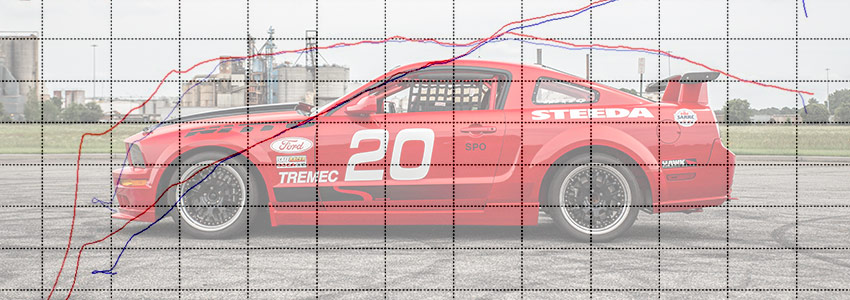
2005-2010 4.6L Mustang Horsepower
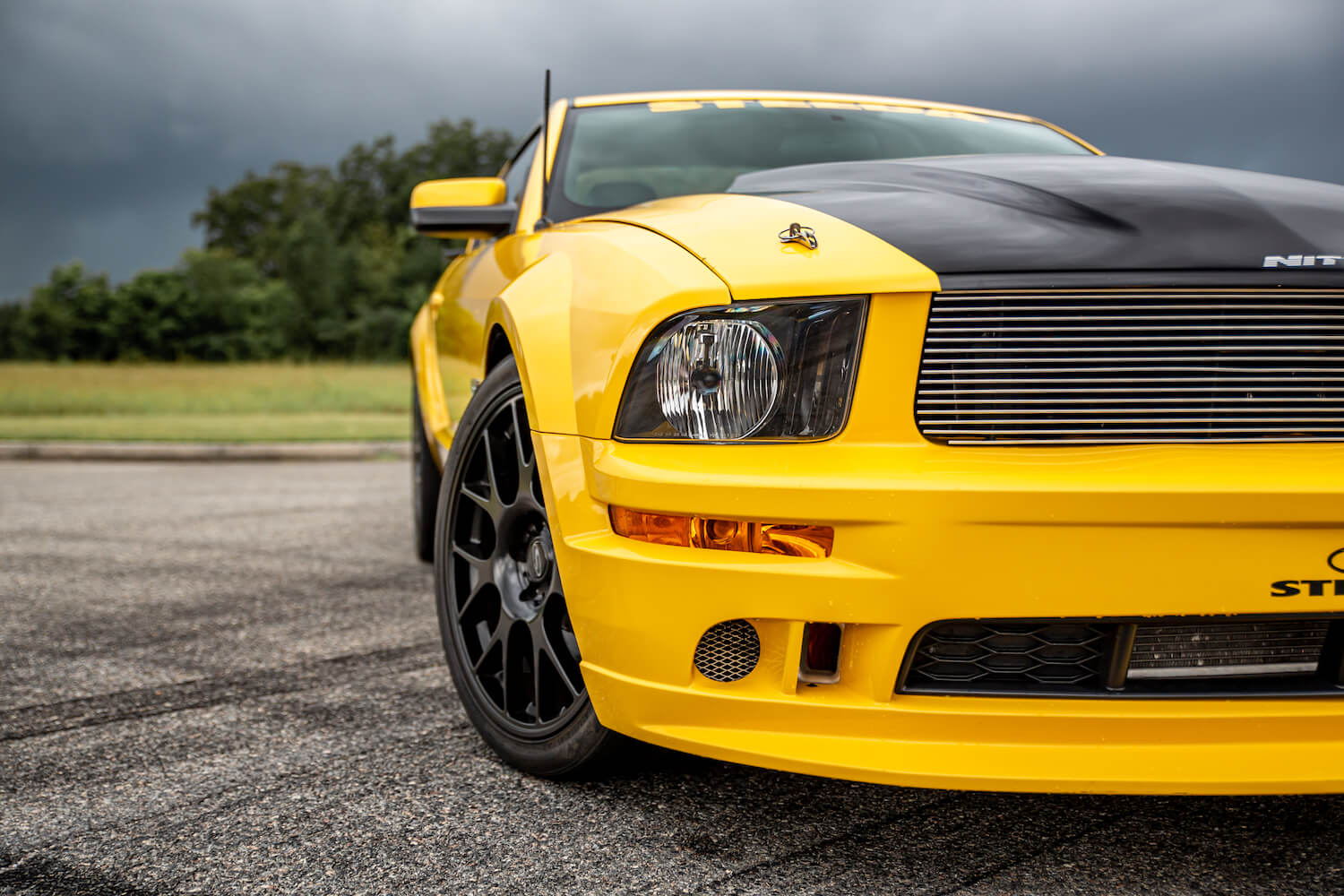
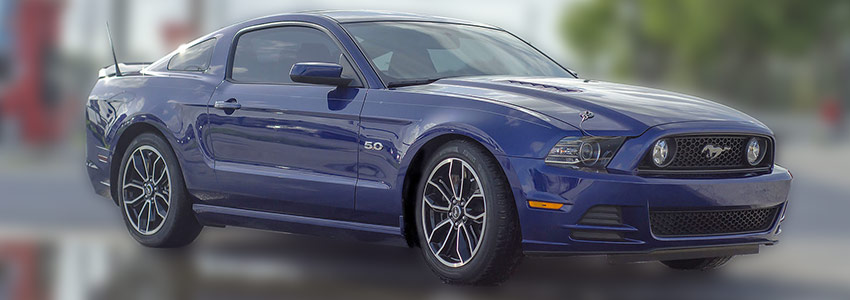
2011-2014 S197 Coyote Mustang Horsepower
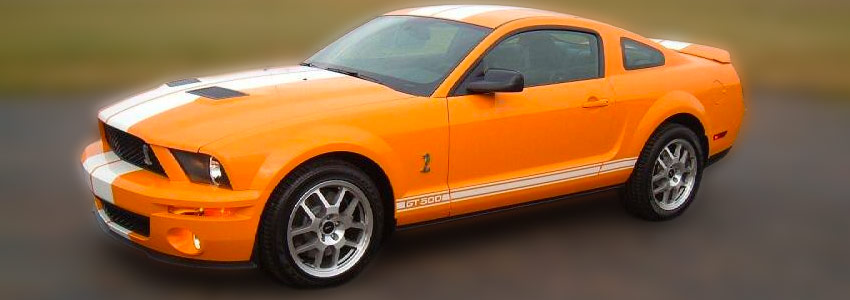
2007-2010 GT500 Mustang Horsepower
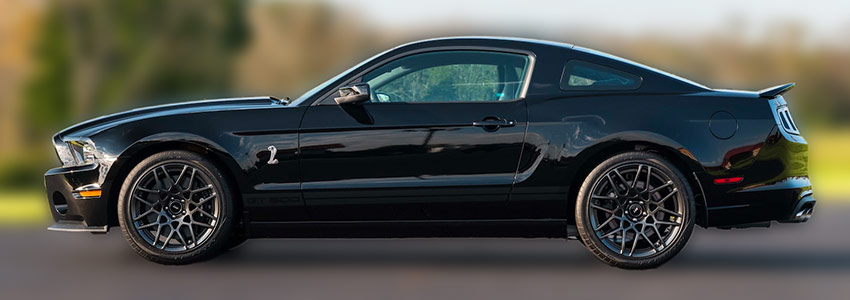
2013-2014 GT500 Mustang Horsepower
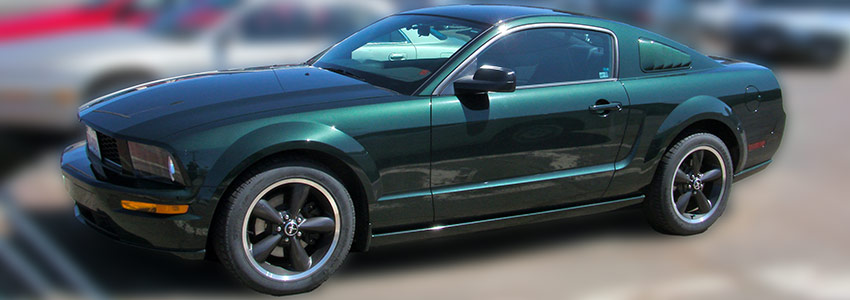
2008-2009 Bullitt Mustang Horsepower
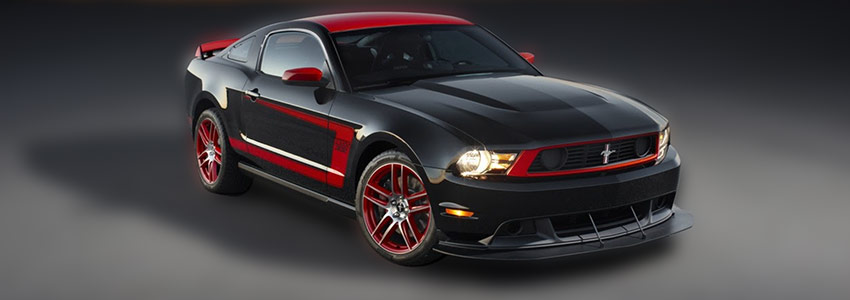
2012-2013 Mustang Boss 302
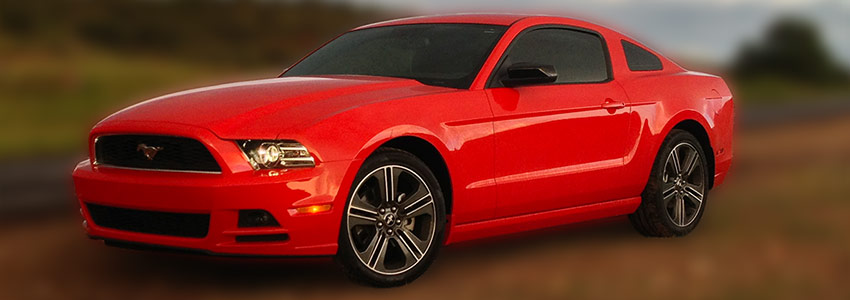
Improved Performance For Base S197 Mustang Horsepower And Torque
2005-2014 Mustang Horsepower & Torque Ratings
Year(s)
Engine
Trim
HP
TQ
2005-2009
4.6L 3V SOHC V8
GT
300
320
2010
4.6L 3V SOHC V8
GT
315
320
2011-2012
5.0L 4V DOHC V8
GT
412
390
2013-2014
5.0L 4V DOHC V8
GT
420
390
2007-2009
5.4L 4V DOHC V8 S/C
Shelby GT500
500
480
2010
5.4L 4V DOHC V8 S/C
Shelby GT500
540
510
2011-2012
5.4L 4V DOHC V8 S/C
Shelby GT500
550
510
2013-2014
5.8L 4V DOHC V8 S/C
Shelby GT500
662
631
2008-2009
4.6L 3V SOHC V8
Bullitt
315
325
2012-2013
5.0L 4V DOHC V8
Boss 302
444
380
2005-2010
4.0L SOHC V6
Base
210
240
2011-2014
3.7L DOHC V6
Base
305
280
Related Articles




